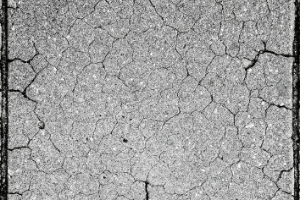The construction industry is continuously evolving, and concrete is still one of the leading materials used in construction. Its properties have been improved through new admixtures and additives, and as a consequence its range of applications continues to expand.

Concrete consists primarily of aggregate (approx. 70%). The selection of appropriate ingredients determines the properties of the concrete mix and the final product, in the form of hardened concrete. Descriptions of aggregate selection can be found in PN-EN 206:2014 “Concrete – requirements, properties, production and compliance”.
The options for using each material are dictated by its properties. In the case of concrete, we consider them separately for the two forms. Hardened concrete is characterised by: strength, water resistance, water absorption, frost resistance and abrasion. Concrete mix is characterized by: workability, pumpability, water release and consistency. Various admixtures and additives can be added to modify these properties.
Admixtures are substances added during the production of concrete mix, in an amount not exceeding 5% of the cement weight. They are added to modify the properties of the concrete mix and/or hardened concrete. Admixtures can be broken down into: plasticising – plasticizers, liquefying – superplasticizers, mixtures delaying/accelerating setting, air-entraining, and complex admixtures. Plasticizing and liquefying admixtures are also described as admixtures reducing the water content. Each of the above admixtures is characterised by different effects that determine their application.
Concrete additives are non-organic and fine-grained ingredients. They allow us to improve existing or obtain new concrete properties. Additives usually comprise more than 5% of the cement weight. Additives can be divided into two types. The first includes filling aggregates and pigments, and the second is broken down by its properties: hydraulic – ground-granulated blast furnace slag, and pozzolanic – silica dust and siliceous fly ash.
Silica dust, also known as microsilica, is a particularly popular additive. It comes from the waste generated during the production of metallic silicon, ferrosilicon, and other silicon alloys. The physical and chemical properties of microsilica are sufficient to obtain concrete with a strength of 100-150 MPa. There are two other important factors contributing to this effect. The first is the interaction of silica dust with plasticising admixtures as well as plasticizers and superplasticizers for concrete mix, while the second involves the pozzolanic properties of microsilica.
The PCC Group is one of the leading manufacturers for the construction industry. Its product catalogue includes a whole range of specialised products, such as plasticizers, superplasticizers, dispersants, emulsifiers, fluidizers and wetting agents.
One popular product is Betoplast K, an air-entraining and plasticizing admixture for concrete. Its main advantages are: improved plasticity, i.e. increasing frost resistance of concrete and reducing friction during concrete pumping.
Concrete products are still essential for the construction industry, and they will definitely remain with us for a long time. It is therefore important to use the highest quality products, those that meet modern requirements. Manufacturers continue to introduce new solutions in accordance with the current trends, in particular ecological construction. Therefore, we encourage you to follow the constantly expanding portfolio of the PCC Group. All our new products are presented on our Product Portal.